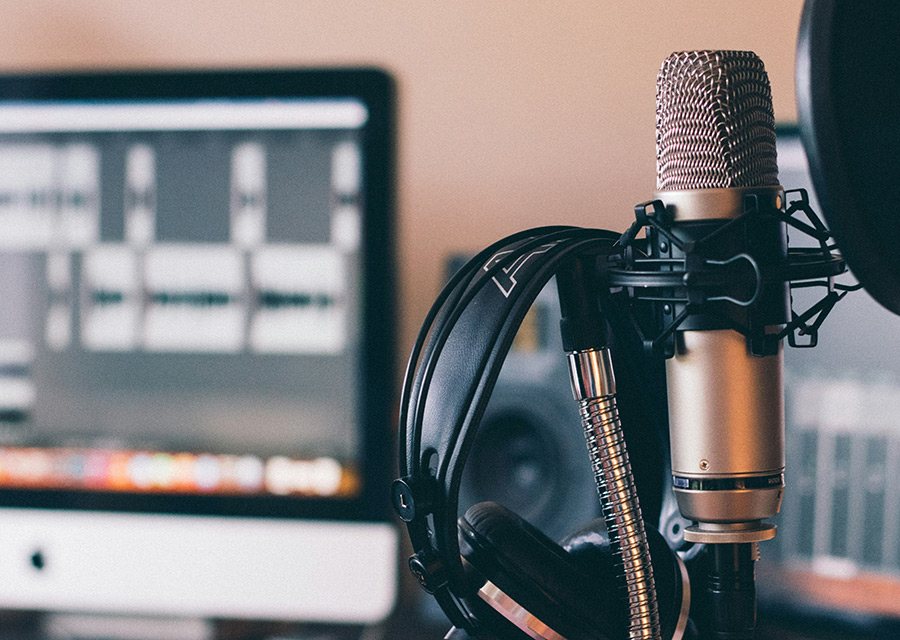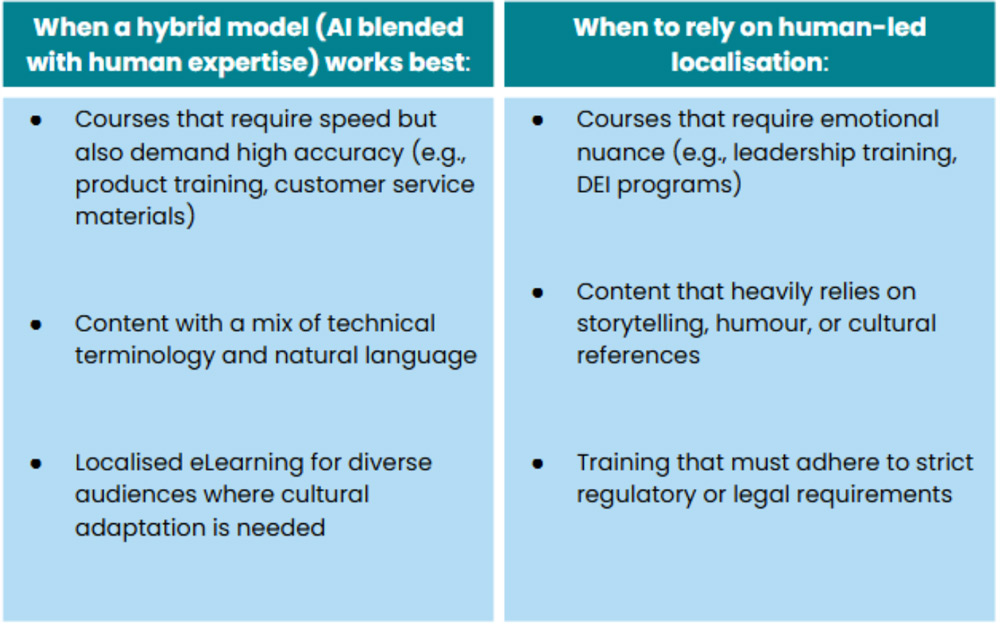AI voiceover technology has made significant strides in recent years.
Also known as synthetic voiceover or text-to-speech, AI can convert written transcripts into an automatically generated voice that sounds as convincing as a human’s.
Just as human voiceover artists can be hand-picked, these AI-driven systems, developed by blending datasets of thousands of human voices, can generate multiple languages and even regional accents. Thus, they offer a scalable, cost-effective alternative to traditional voiceover recording.
AI voiceover is perfect for module narration and animations with multiple characters. It can quickly update and edit audio files and is available in a growing list of languages, meaning budgets can stretch further while preserving the learner experience.
Why might you want to use AI voiceover?
- Speed – Generate high-quality voiceover in minutes, not weeks.
- Scalability – Quickly localise training materials across multiple languages and regions.
- Budget – Reduce reliance on professional voice actors and recording studios, plus minimise costs for updates and revisions.
- Flexibility – Easily edit and modify content without needing a full re-record.
- Consistency – Maintain uniform pronunciation, tone, and style across multiple courses.

What are some of the best use cases for AI voiceover?
AI voiceover is ideal for:
- Localising high-volume, frequently updated training materials
- Video content with multiple characters/voices
- Reducing time-to-market for global training rollouts
Some of AI’s challenges and limitations:
- AI-generated voices may lack the emotional granularity needed for storytelling or empathy-driven training content
- Pronunciation inconsistencies, especially in context-dependent terminology
- Difficulty in handling acronyms and words with multiple meanings without manual adjustments
Expert tip: Implement AI voiceover as part of a blended strategy—using AI for content such as screen readers, and human artists for high-stakes video.
What are the most common AI voiceover mistakes?
Whatever software you use to do your AI video content, there are some specific challenges to be aware of:
Names and Numbers
- AI can struggle with foreign names, both people’s names and company names.
- AI might literally translate numerical signs, e.g. “20%” becomes “20 percentage” (rather than “per cent”).
- During QA, these will need manual tweaking to ensure they’re “recorded” correctly!
Abbreviations and Acronyms
- If your source content contains abbreviations such as “e.g.”, watch that these get pronounced correctly and not literally. For example, the Spanish abbreviation “p.ej” is pronounced as “por ejemplo” rather than just the letters.
- Acronyms might be pronounced using the target-language alphabet, but your preference could be for them to be kept as they sound in English.
Timing and Sync challenges
- Translations into specific languages (e.g. German) are often longer than English translations, meaning that speech may overlap or run too long in the German version of your video.
- Translations often need shortening to match the visual content.
How to ensure AI voiceover quality: 5 Top Tips
- Get sign-off of translated transcripts
Ensure your in-market team has approved the translations before you hit record – this will make the AI voiceover stage much easier!
- Consider your cast
AI voiceover platforms offer a wide range of voices, so make sure you’re happy with your selected one before proceeding.
- Check pronunciation carefully
A native-speaking linguist should listen to the AI-generated audio to catch and correct any mispronunciations.
- Refine intonation for natural flow
Pay close attention to AI-generated speech in long sentences, as it may have unnatural pitch drops in the middle or end of a sentence. Splitting sentences can help improve the flow.
- Partner with AI voiceover specialists
Work with a localisation expert experienced in AI voiceover to ensure professional-quality results that engage learners.





